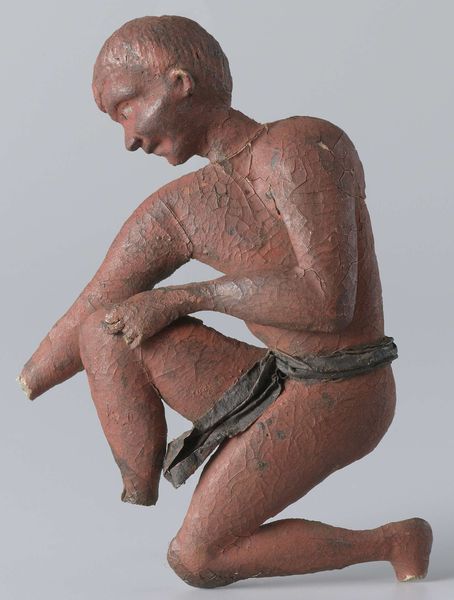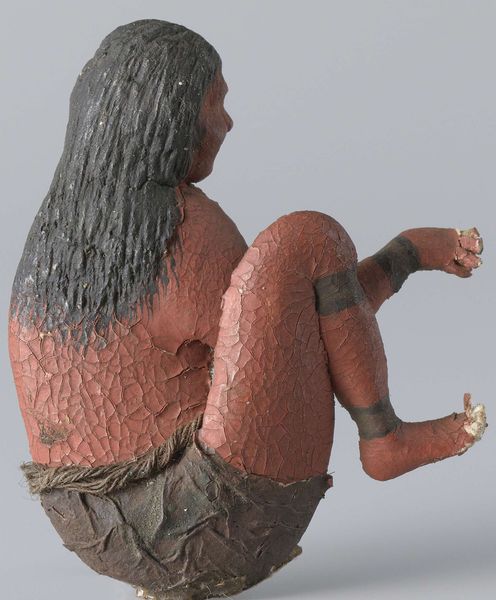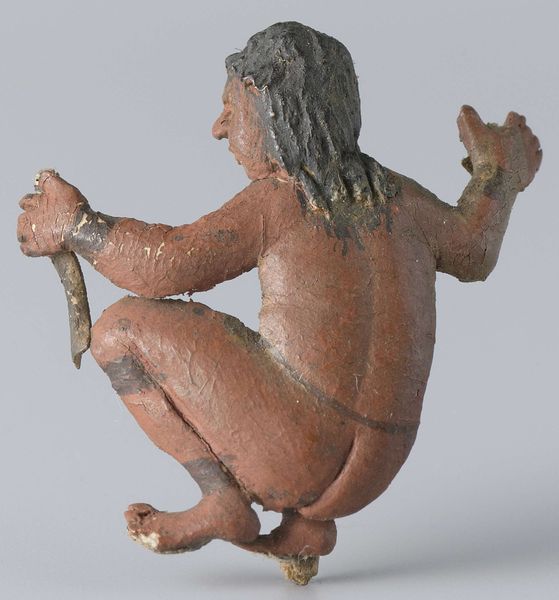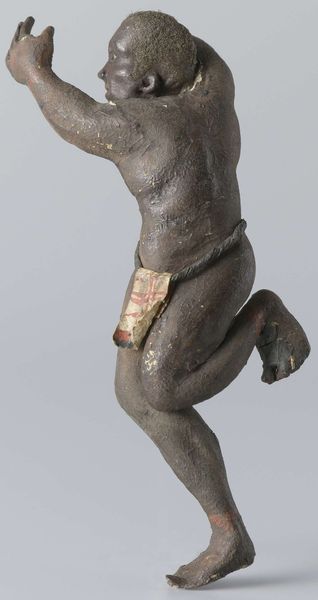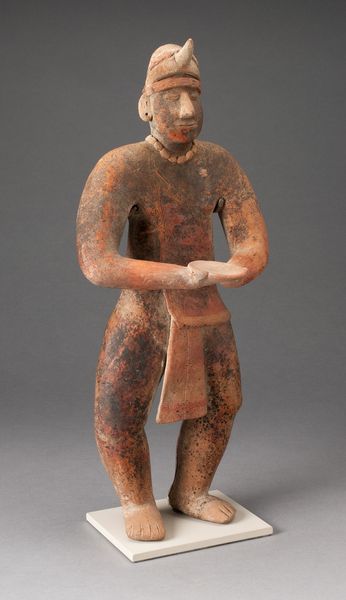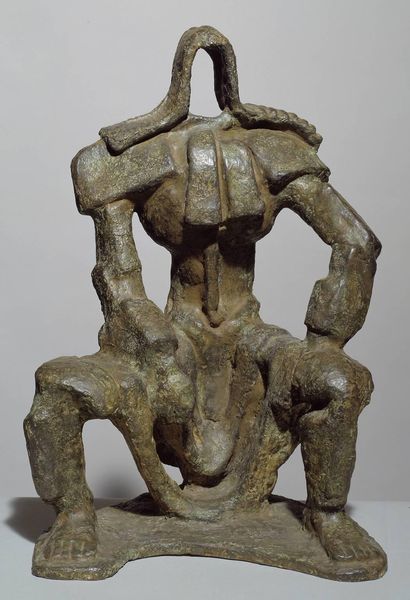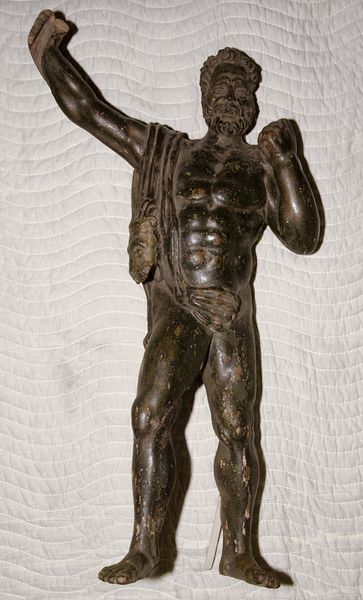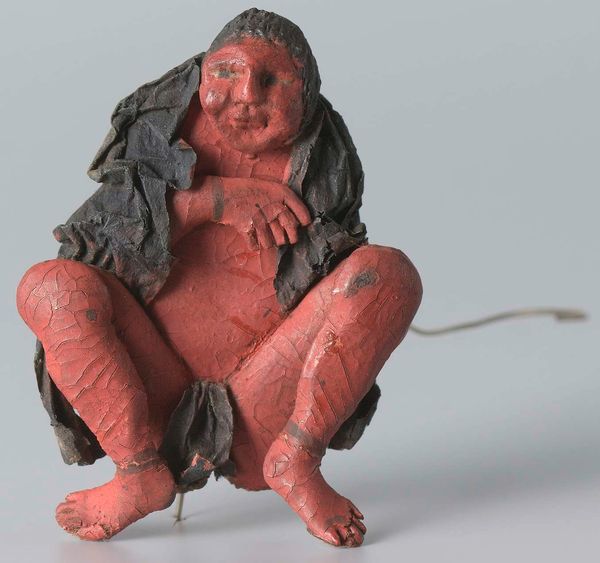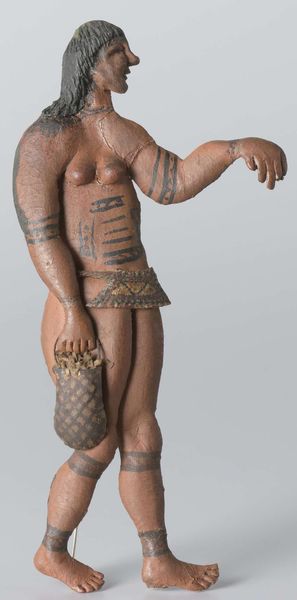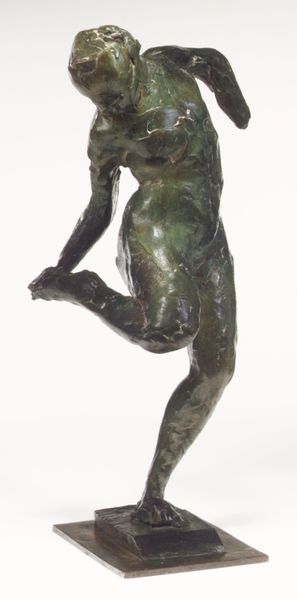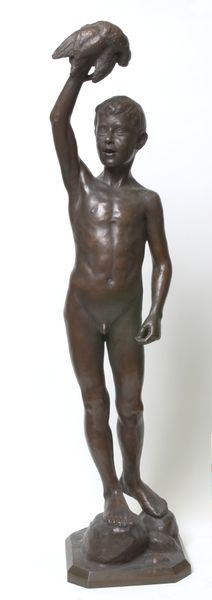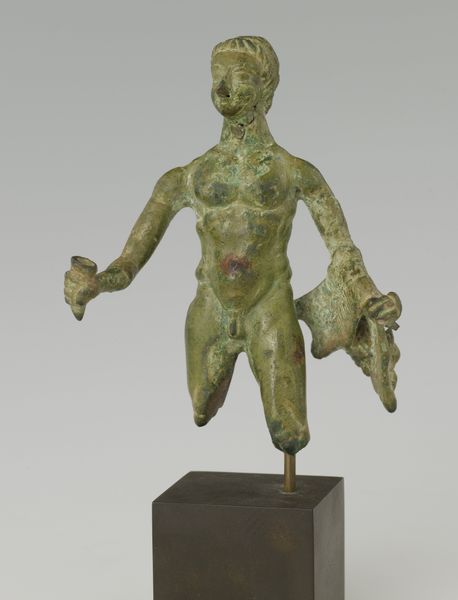
sculpture, papier-mâché
#
sculpture
#
figuration
#
sculpture
#
papier-mâché
#
indigenous-americas
Dimensions: height 5.8 cm, width 3.7 cm
Copyright: Rijks Museum: Open Domain
Gerrit Schouten made this small painted sculpture of a kneeling Arowak or Carib man sometime in the late 18th or early 19th century. Schouten was working in Suriname, then a Dutch colony, and he specialized in these kinds of depictions of local people. What are the politics of imagery at play here? Well, this sculpture presents the indigenous people of Suriname as exotic objects for the European gaze, fitting into a long tradition of colonial portraiture and natural history illustration. Schouten was part of a local artistic culture shaped by European expectations and desires. We can ask: what social conditions shaped Schouten's artistic production? The colonial context is crucial. Suriname was a plantation society built on slavery. The Dutch colonizers and their institutions created a system of representation that reinforced their dominance. To truly understand this piece, we need to investigate the colonial archives, travelogues, and ethnographic studies of the period. By examining these resources, we can gain insight into the complex relationship between art, power, and representation in colonial Suriname.
Comments
No comments
Be the first to comment and join the conversation on the ultimate creative platform.
